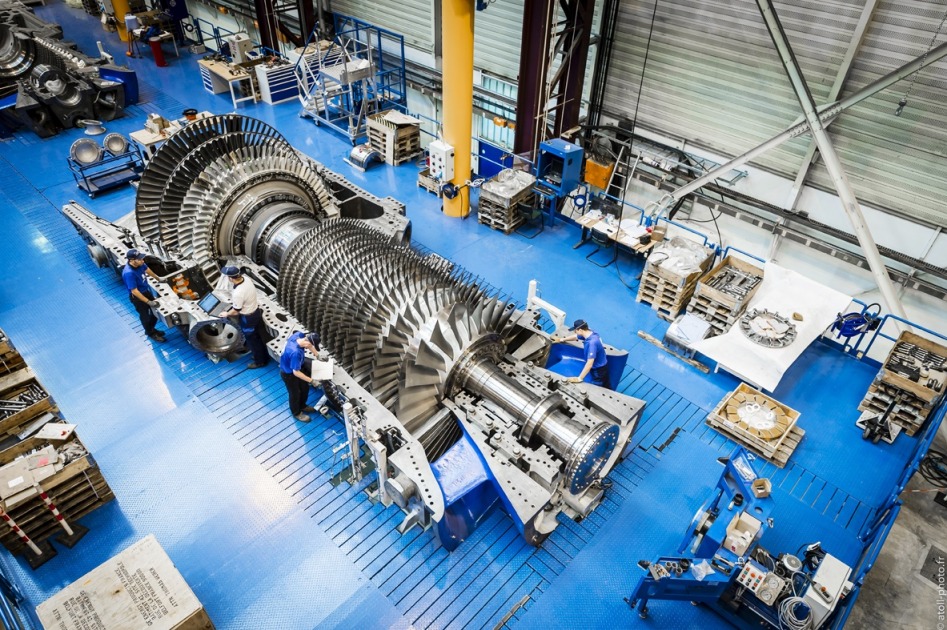
Decarbonizing Power Generation in Saudi Arabia: The Role of Gas
Saudi Arabia’s energy mix is in the midst of a significant transformation as it explores more efficient and sustainable power generation solutions. To that end, the most recently published renewable target in Saudi Arabia aims to have around 60 gigawatts (GW) of renewable energy by 2030, including solar and wind power. As the kingdom continues to decarbonize the power sector, gas fuelled power generation presents an excellent complement to renewable energy.
Supplies of renewable energy are typically intermittent in nature as sunshine, rain and wind speeds vary over the course of a day as well as across seasons, and battery storage solutions remain expensive, often making them economically infeasible.
“Gas power technologies not only offer the flexibility to ramp power production up or down rapidly to meet potential gaps in energy supply from variable renewable sources and stabilize the grid but gas also presents the cleanest means to generate electricity from traditional fossil fuels,” says Joseph Anis, President and CEO of GE Gas Power in the Middle East, North Africa and South Asia.
Technological advancements, including record-setting gas turbine efficiencies, upgrade solutions, hybrid systems and hydrogen fuelled power generation offer a pathway to decarbonization, while providing reliable, on-demand electricity.
Advanced technologies
A key driver in leveraging the ‘Age of Gas’ is the development of advanced technologies. Today, GE has the world’s largest installed base of over 7,500 gas turbines with more than 500 turbines across Saudi Arabia and the company is helping customers to unlock the true potential of gas through industry-leading solutions.
GE’s HA gas turbine technology for example has already set two world records for efficiency, one each in the 60 hertz and 50 hertz segments of the global power market. Capable of ramping up or down at up to 88 megawatts (MW) per minute, the technology can also support countries’ transition to having a larger proportion of renewable power in their energy mix by adjusting power output quickly to help balance the grid.
Moreover, upgrade solutions are available that can simultaneously increase the output, efficiency, flexibility, lifespan, and availability of gas turbines, while reducing fuel consumption and environmental impact. For example, GE’s Advanced Gas Path (AGP) upgrade solution was installed on three 6B gas turbines at Saudi Cement’s Hofuf plant, helping to enhance efficiency by up to 3.3% per unit.
Conversion from simple cycle to combined cycle can also help increase the efficiency of power plants by up to 50% without any additional fuel costs, substantially decreasing emissions per megawatt of power generated.
Furthermore, natural gas based combined cycle power plants can potentially be paired with carbon capture, utilization and storage (CCUS) technology to provide cleaner, firm power. CCUS projects have operated globally in various industries since the 1990s with 21 large-scale projects in operation as of September 2020, and another 40 in various stages of development. In fact, in Saudi Arabia, Aramco is already using carbon capture technology at the Hawiyah NGL Recovery Plant.
Hybrid systems are another means to support the decarbonization of the power sector. For example, Southern California Edison (SCE) and GE unveiled the world’s first battery-gas turbine hybrid system in Norwalk, California. The energy storage capacity of the battery has been specifically designed to provide enough time coverage to allow the gas turbine to start and reach its designated power output. Therefore, the system does not need to burn fuel and consume water in standby mode to dispatch power immediately when demand surges or renewable energy supplies decline.
Hydrogen
There are multiple approaches for low-carbon or carbon-free fuels, including the use of hydrogen for power generation. Today, GE has the largest fleet experience in using alternative low heating value fuels including hydrogen for power generation. GE has over 75 turbines operating on low heating value fuels, including blends of hydrogen and natural gas, accumulating over 6 million operating hours.
In Ohio, USA, GE is already enabling the transition of a 485 MW combined-cycle power plant to run on carbon-free hydrogen. Long Ridge Energy Terminal, which owns the plant, is collaborating with GE and New Fortress Energy to provide carbon-free power by blending hydrogen in the gas stream and transitioning the plant to be capable of burning 100% green hydrogen over the next decade.
Saudi Arabia is also well-placed to potentially utilize hydrogen for power generation in the near future with the announcement in July 2020 that Air Products, ACWA Power and NEOM will be setting up the world’s largest green hydrogen project to supply 650 tons per day of carbon-free hydrogen.
“Gas-based power generation technologies have a critical role to play in our transition to a cleaner energy future and GE Gas Power will continue to be a partner of growth for Saudi Arabia and countries across MENA as they strengthen national power infrastructure further,” concludes Joseph Anis.


























